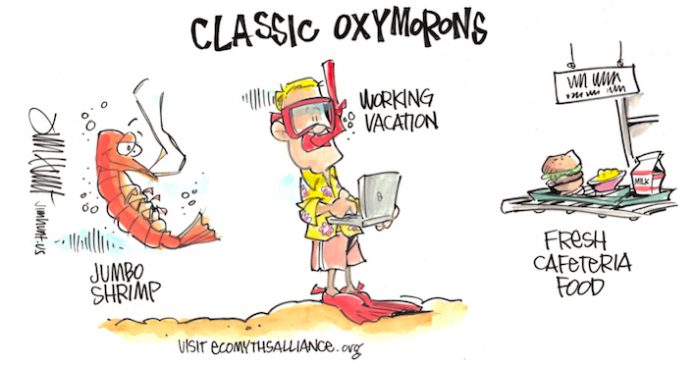The oxymoron takes two opposite terms and uses them together in a pairing or in a phrase to describe something or create meaning. While the device is used only as a figure of speech, it has been significant in literature, and famously used by Shakespeare.
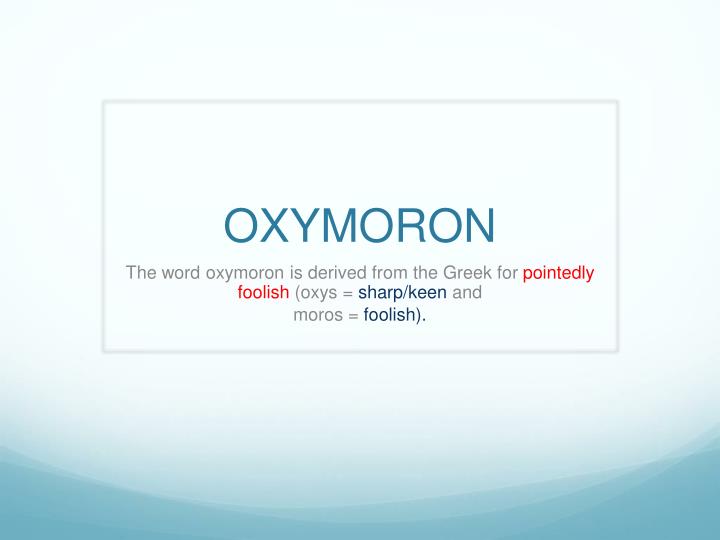
In addition, the oxymoron is used to describe places and things in a non-literary context such as the most common figures of speech.
Oxymoron Examples
Literature is not the only medium where the oxymoron applies. Some examples of the oxymoron appear every day and are used as very common figures of speech. Examples include:
- Jumbo shrimp
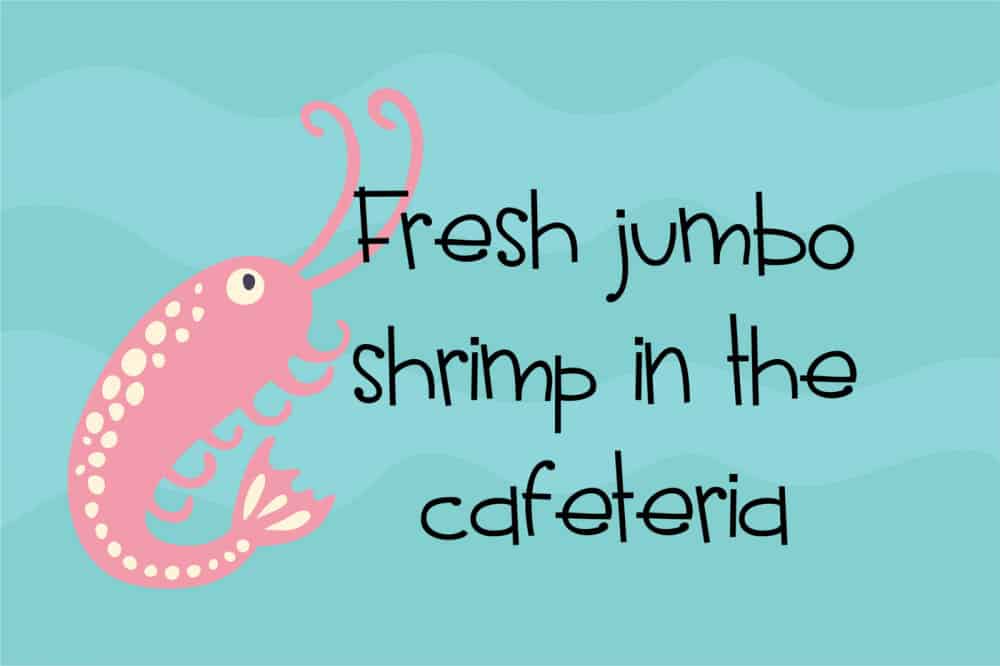
- Safe risk
- Honest politician
- Less is more
- A new classic
- Alone together
- Authentic replica
- Anarchy rules
- Amicable divorce
- Arrogant humility
- Authentic reproduction
Oxymoron in Shakespeare
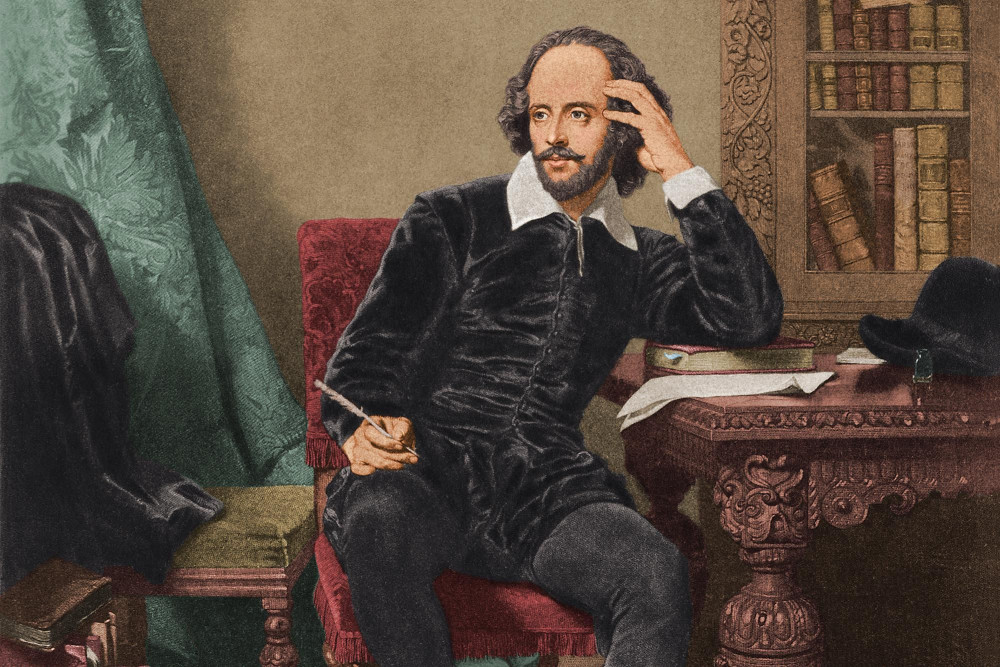
Shakespeare was known for using figures of speech to create meaning. He was also noted for using the oxymoron in many of his plays. Some of them include:
- Fair is foul and foul is fair (Macbeth)
- Parting is such sweet sorrow (Romeo and Juliet)
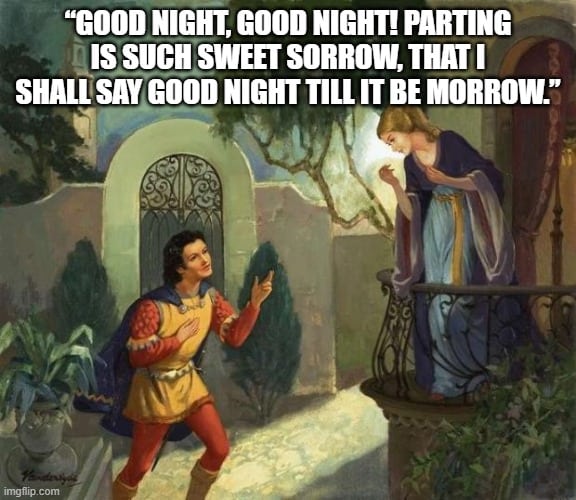
- O brawling love! O loving hate! (Romeo and Juliet)
- Do that good mischief which may make this island thine own forever (The Tempest)
Shakespeare uses such devises, along with symbolism and the allegory, in order to create meaning beyond the literal. They are not meant to confuse the reader. And, because Shakespeare’s plays are poetic, he can use the device to create a stronger and more dramatic feel.
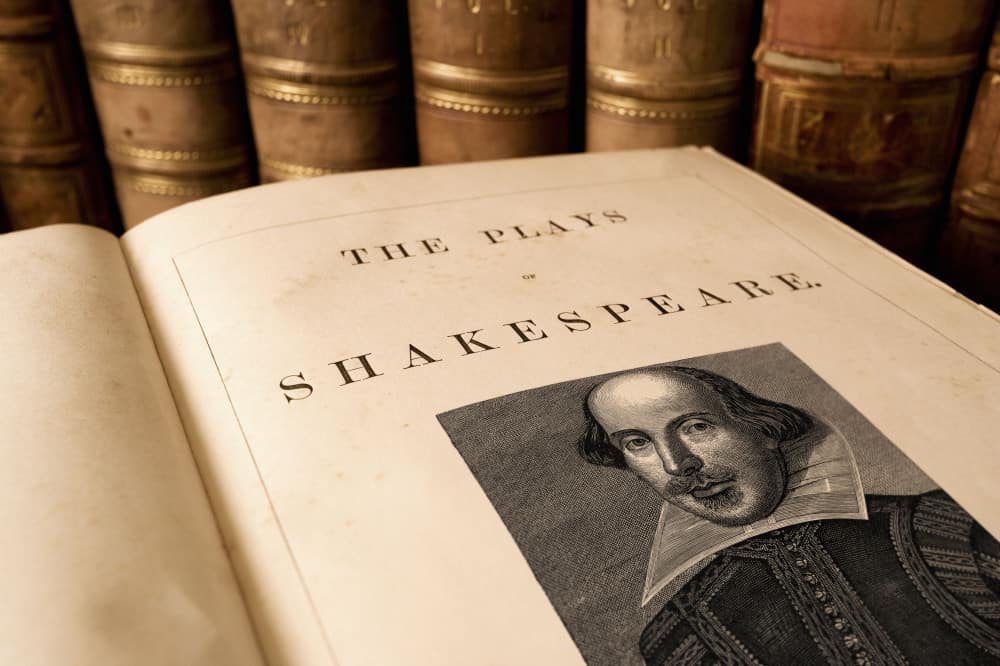
The effectiveness in his use of the oxymoron is proven in the fact that the preceding lines have remained famous for centuries.
Oxymoron Paradox Difference

The difference between the oxymoron and the paradox seems narrow but a difference does exist. For example, an oxymoron appears as only two words that contradict one another (even when used as part of a phrase) and the paradox is a larger collection of words to create the contradiction.
Kind cruelty = oxymoron
Cruelty is kind = paradox
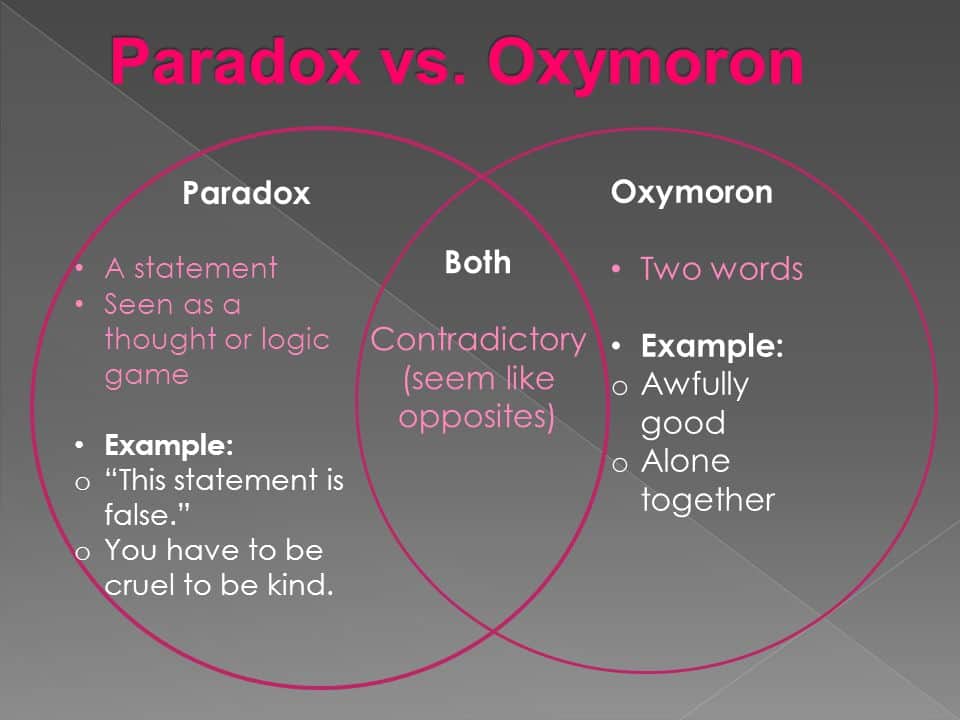
Further, the paradox might require an entire paragraph in order to create the desired feeling or meaning, whereas the oxymoron is more concise. Like the oxymoron, Shakespeare also used the paradox in his plays in order to create meaning, but the oxymorons (i.e. Parting is such sweet sorrow) have tended to last longer.
Oxymoron Puns
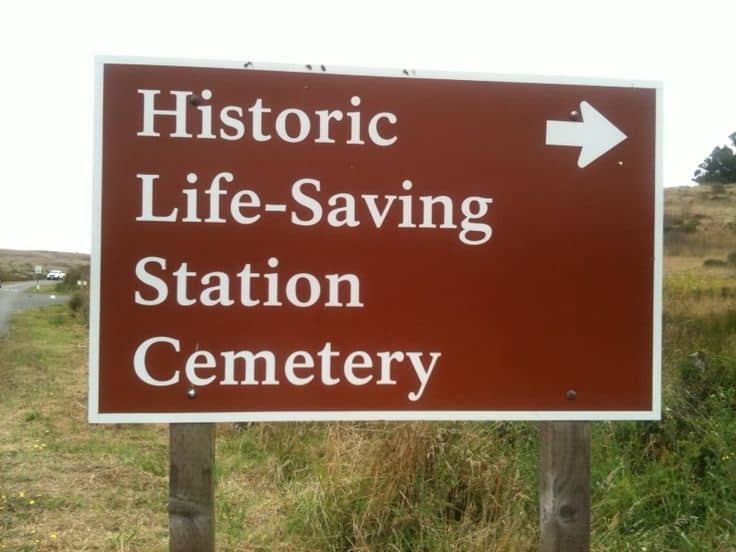
Very often, the oxymoron appears as a pun because the contradiction in terms is set up inadvertently. Examples of oxymoron puns include:
- Accidentally on purpose
- Pretty ugly
- Controlled chaos
- Hot ice

- Alone in a crowd
- Open secret
- Organized mess
- Same difference


